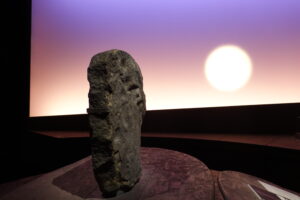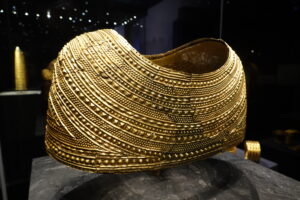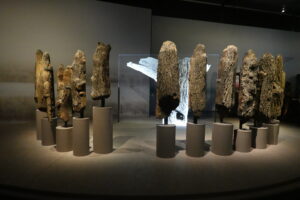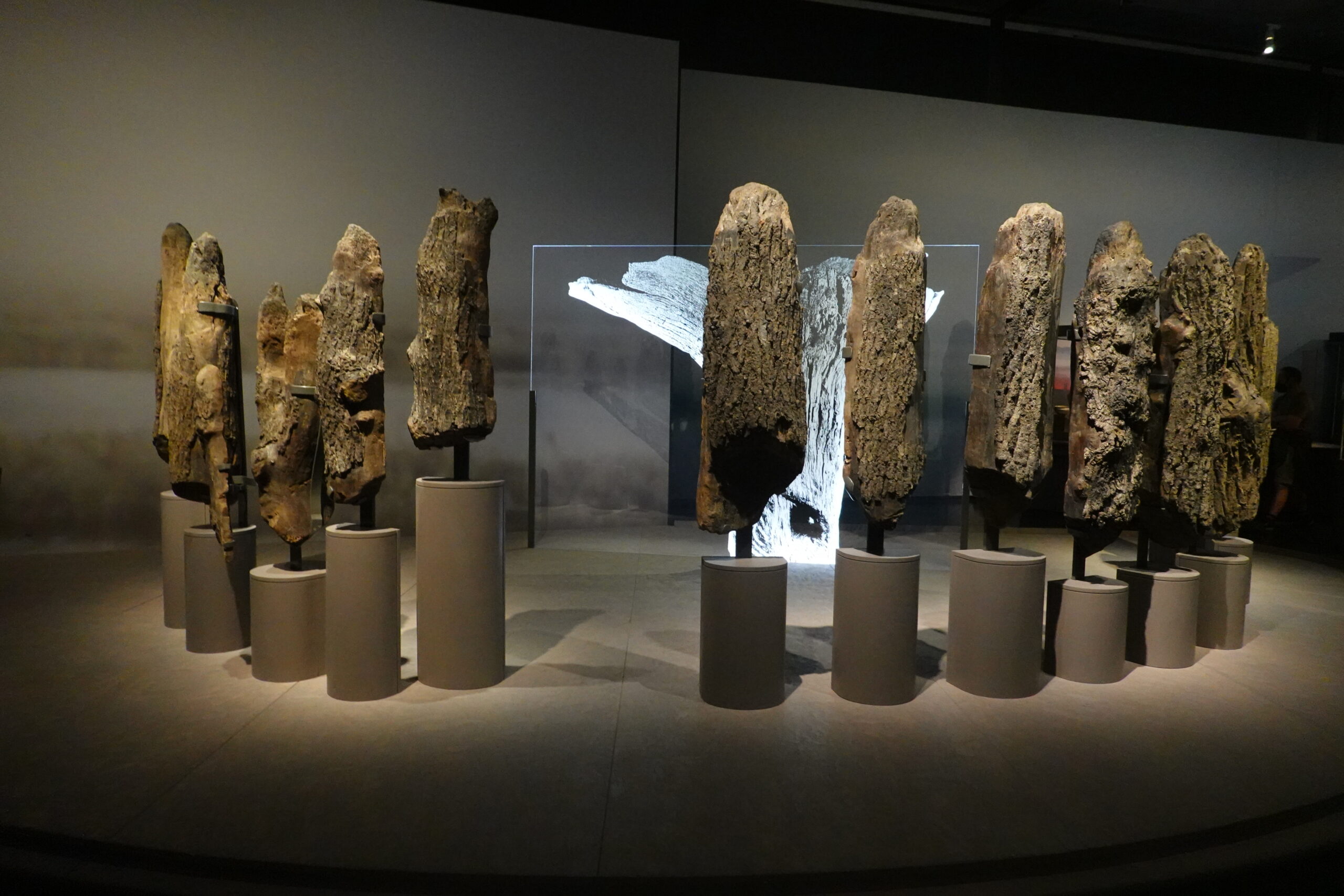Considering the worldwide fame of Stonehenge, and centuries of antiquarian and scientific investigation, it may come a surprise that there has never been a museum exhibit about this ancient monument. Not, that is, until now.
Sun News was at the British Museum for a thorough study of the exhibit in early June.
Now, this is not just an exhibit about Stonehenge (in Somerset, England). Artifacts are on loan here from other countries, with a focus on items that are very old indeed. Typically 3,000 years old, or more, so that they were made when Stonehenge was being built or actively used. I think the only place where the exhibit goes too far is in the concluding section, which includes a bronze breastplate from France (dated to 850 BCE) and a metal figure from Sardinia (about 700 BCE). While still antiquities, they are far too young to feel any resonance with the stated nature of the exhibit. These objects are about 2700 years old, but the sarsen stone phase of Stonehenge was finished 4,500 years ago! The importance of Stonehenge lasted a thousand years, waning about 3500 years ago.

Objects more pertinent include a stone axe, originally built in the Alps in 3807 BCE. It was used to help build a trackway across Somerset to allow the first farmers in the region to communicate and move across the wetland. Another extraordinary item, but 2300 years younger than the axe, is a human hand from Switzerland made of bronze and gold. It is embellished with solar symbols that indicate a knowledge of cosmological ideas current across north-west Europe, and is presumably here as Stonehenge was built to align with the Sun. The Sun also features in a large statue, one of the earliest human sculptures in Europe. It comes from the Swiss Alps, and is 4,500 years old.
Since Stonehenge itself was not moved to London for the exhibit, the ‘star of the show’ is absent. It’s sort of like having an exhibit in London of paintings by Leonardo, with the Mona Lisa remaining in Paris. The exhibit curators have thus had to be very creative, and in this they have largely succeeded.
The real star of the show, which is present, is something you likely have never heard of: Seahenge (lead photo with this story). This is a 4,000-year-old timber circle, found in Norfolk in 1998. When built, it must have been quite astonishing. It consisted of 55 large oak posts, set in an oval some 7 metres across. At its centre was a mighty oak weighing 2.5 tons. But the extraordinary thing is, this giant oak was placed upside down, so that its roots turned towards the heavens like branches. Being trees, we can actually date its construction quite exactly to 2049 BCE. The display of many of the actual wooden posts here, nearly free-floating in front of the visitor, is quite extraordinary. The purpose of Seahenge is unknown (like Stonehenge, there are no written records), but it may have marked a spot where an important historic event happened.
Not to be outdone, Scotland gets its due here too. In that far north we now call the Orkney Islands, come decorated stones that may be 5,000 years old. It is a real treat to see these, as they were found very nearly a century ago, in 1925. Since then, more than 700 decorated stones have been found in Orkney. An entire cabinet is devoted to these fairly small decorated stone balls. The most elaborate one is 5,000 years old, decorated with interlinked spirals, triangles and other concentric patterns. Scholars have come to no conclusion as to what these stone balls mean, but their collective display here is remarkable.

The items that will evoke the most visceral response from most visitors are drums made of chalk. One set consists of three drums: small, medium and large (the largest being just 14.4 cm across). These objects were found in 1860 in Yorkshire, and were placed along the line of a child’s back. That child died 5,000 years ago, showing how much he must have been loved by his family. Beside this trio is another chalk sculpture, recently found in the same area of England. It was placed with three children of different ages who were buried close together, the two youngest holding hands. The top is marked with three drilled holes, one for each child. Also 5,000 years old: human emotion has not altered in all that time.
The only burial from Stonehenge, dating to 4,300 years ago, is also represented here. He was buried in a ditch encircling Stonehenge, with three flint arrows in his body (all three are here).

There is much gold on display as well, including gold collars from Cornwall in England and Brittany in France. They are between 4,000 and 4,500 years old, and were likely made by the same skilled goldsmith. The gold most closely associated with Stonehenge is appropriately called the Stonehenge sun-disc. It was found 30km upstream from Stonehenge and is roughly 4,300 years old. The cruciform motif on the disc likely represents the four arms of light seen at sunrise and sunset. Women knew how to dress back then too: on display from Wales is a cape made of solid gold, which would have covered the entire upper body of a very wealthy woman (maybe a Queen?) It’s maybe as old as 3,900 years. Truly stunning.
The greatest astronomical treasure of all is also here, the famous Nebra Sky Disk from 1600 BCE. It is on loan from Germany, although the gold decorations in it came from Cornwall in England. Most notably, we can see a depiction of the Pleiades star cluster, the most prominent small collection of stars in the sky. The disc is set in a cabinet against a backdrop of the night sky, with the Pleiades twinkling above the heads of visitors. Beautifully presented.
An exhibit of tremendous riches from the pre-history of Europe, this is truly a world-class exhibit. Certainly an essential visit for anyone going to London soon.
The exhibit runs thru July 17, 2022. Go to www.britishmuseum.org for tickets
There is an excellent 271-page catalogue for sale in the gift shop, along with many other Stonehenge-themed things.

